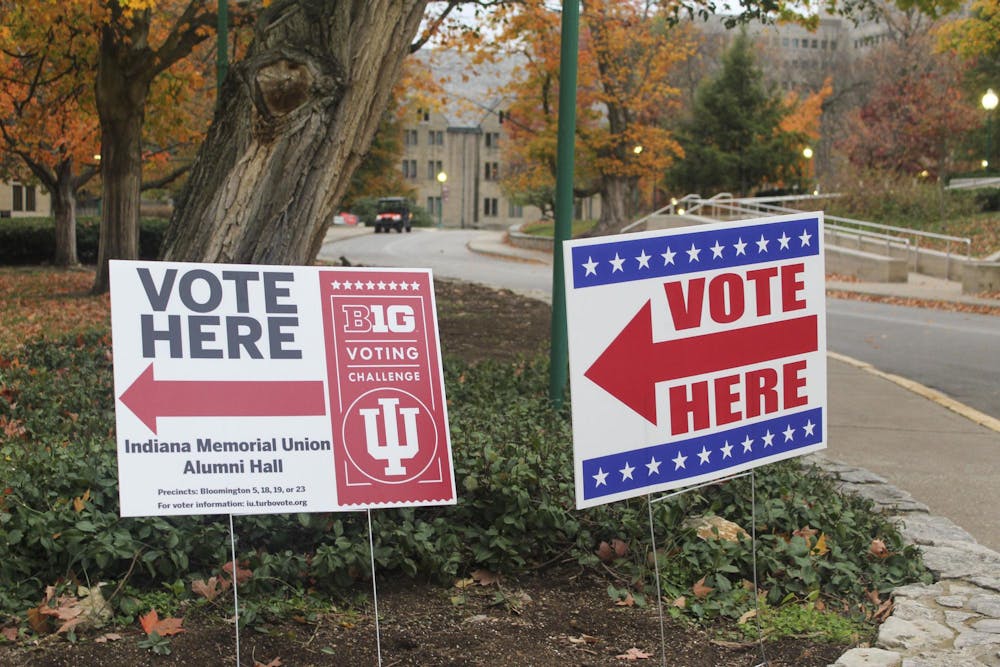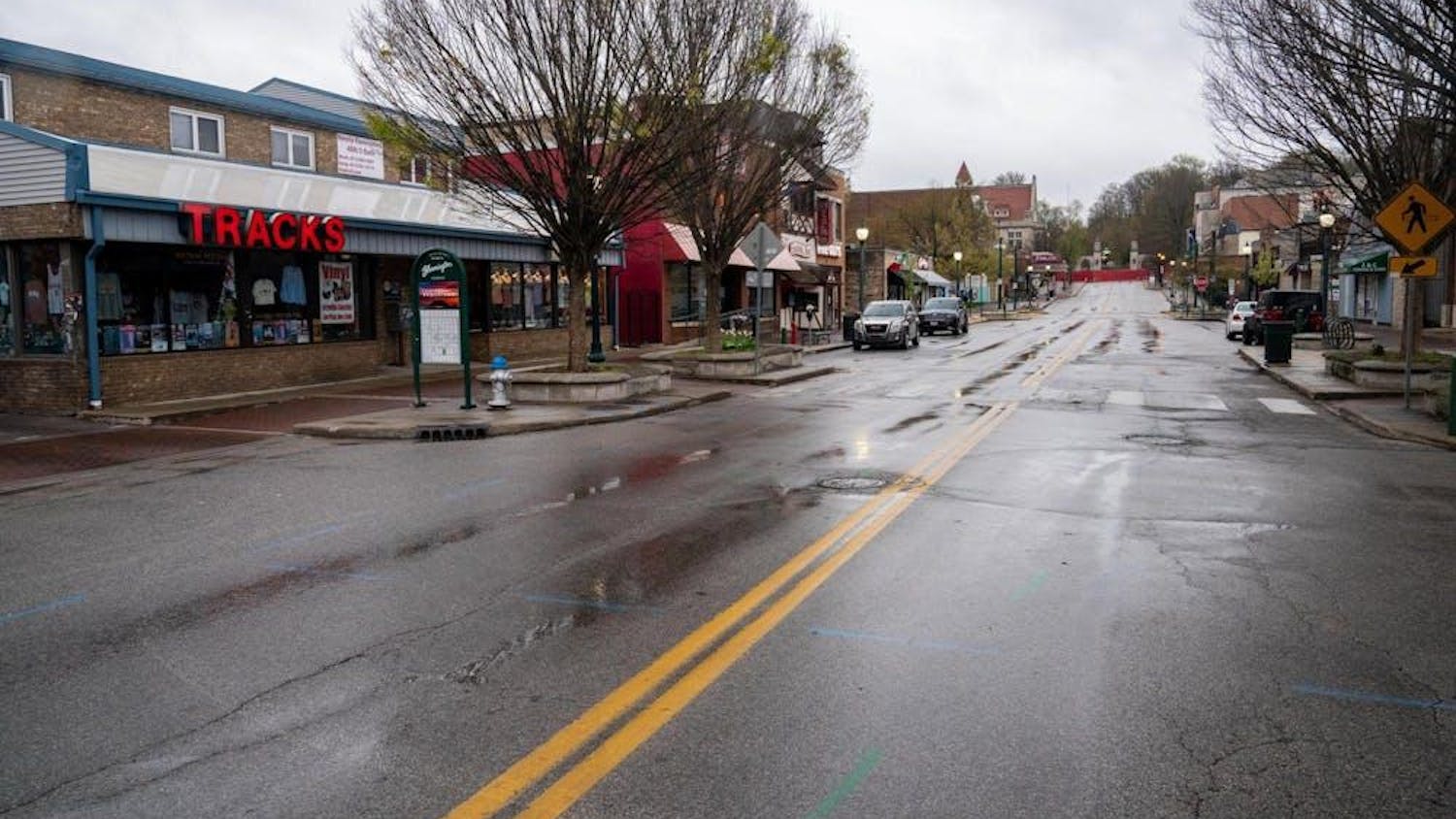Over 20 people spoke Monday in favor of a plan to change Monroe County’s voting system to one where any registered voter could vote at any county polling place.
This discussion took place during public comment at a Monroe County Election Board hearing at the Monroe County Courthouse. The next hearing on vote centers — the name for polling places where any voter can cast a ballot — will be 5:30 p.m. May 19 at the Monroe County Courthouse, when the Election Board will vote on the plan. Currently, voters must go to a specific polling place determined by the precinct they live in.
The Monroe County Election Board formed the Vote Center Study Committee in 2023. The committee held public input sessions in Bloomington, Ellettsville and Unionville, reviewed election data and technology needs and looked at information from other Indiana counties, including those with vote centers. Based on emails, interviews and websites from eight other counties with vote centers, they did not have a great impact on voter participation, according to the plan.
The committee’s recommendation was to convert all 29 Monroe County polling places to vote centers before the next elections in 2026.
They also recommended opening three more early voting locations at the Ellettsville Town Hall, the Monroe County Public Library Southwest Branch and the IU Center on Representative Government, or another place near campus. There’s currently one early voting location in Bloomington on Walnut Street.
The estimated cost to convert to vote centers is $601,763, according to the committee’s plan. That’s for additional ballot printers, label printers and scanners, among other equipment. Assuming costs stay the same, that represents a 5% increase in overall election costs. As of 2024, 65 of Indiana’s 92 counties have vote center voting, according to the plan.
Among the supporters Monday were Bloomington Mayor Kerry Thomson, Bloomington City Councilmembers Hopi Stosberg and Isabel Piedmont-Smith, Monroe County Councilor Trent Deckard, Greater Bloomington Chamber of Commerce President Eric Spoonmore and Monroe County Prosecutor Erika Oliphant.
Matt Caldie, who ran unsuccessfully in the Democratic primary for an at-large County Council seat last year, said he went to multiple polling places on the primary election day as a candidate, including at Sherwood Oaks Christian Church.
“I’m pretty confident that more people went in and came out and said, ‘I’m in the wrong place,’ than came out with a sticker,” Caldie said.
He said he knew at least one person who gave up on voting entirely after going to the wrong place. Vote centers would solve that problem, Caldie said.
Nancy Goswami echoed a similar sentiment. She said she’s worked as a poll worker for early voting and Election Day several times. She called it "disheartening” to see voters come in with only a few minutes left to vote and tell them they’re at the wrong location. There’ve been times where she’s had to turn away voters with mobility challenges, she said.
One member of the public, who said she’d been a poll worker during early voting since 2020, supported vote centers. However, she said she questioned if the three added early voting centers were necessary for every election because some have lower turnout.
“There are some elections where I’m being paid to read a book,” she said, “because maybe it’s primary, maybe there’s not a lot on the ballot.”
Another person expressed concern about the distance that elderly voters in rural areas have to travel to vote, like in Gosport. Ilana Stonebraker, Vote Center Study Committee chair, said the Gosport polling place would remain the same, but the vote center plan can be amended yearly by the Election Board. Browne said voters can request assistance with the traveling board, which brings the ballots to eligible voters.
One specific example some speakers brought up was student voter confusion at the Indiana Memorial Union last November. Many voters — including those registered out of state — falsely believed they were able to vote at the IMU, even though it only covered certain precincts.
Nicole Browne, county clerk and Election Board secretary, said Monday that her office believes a third-party organization led students to believe, mistakenly, they could vote where they couldn’t. Many IMU voters filled out provisional ballots, which allow voters to cast a vote if their eligibility is in question. The Election Board later reviews the provisional ballots to decide if that voter is eligible and their vote should be counted.
According to Election Supervisor Kylie Farris, there were 390 provisional ballots cast in the county this past election, with 300 coming from the IMU. Of the IMU provisional ballots, 280 came from voters at the wrong location within the county, and 20 weren’t registered in Monroe County or Indiana.
Anushka Pandey, IU College Democrats president, said at the meeting vote centers would remove barriers to voting, like getting to a specific polling place. She told the Indiana Daily Student she doesn’t believe it’s a partisan issue.
“I’d rather you go vote than not, regardless of what party you support,” Pandey said. “I think that is a sentiment that rings true for a lot of people, because at the end of the day Election Day is about making your voice heard.”
Pandey said vote centers are especially important in response to Senate Bill 10, which would remove school-issued IDs, including IU’s CrimsonCard, as a valid form of identification to vote.
“I think because we’re seeing suppression from the state level, it’s more important than ever to make sure at the county level that we do what we can,” she said.
Monroe County residents can provide feedback on vote centers via an online form before the board’s May 19 meeting.




